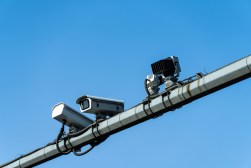Public safety agencies struggled to use CARES Act funding, report finds

Despite access to more than $600 billion in grants made available by the federal government and private sector each year, public safety agencies have struggled to make use of that funding, according to a new report from the law enforcement consulting firm Lexipol and the wireless network equipment company Cradlepoint. And those issues persisted into the COVID-19 pandemic, the report’s authors found, even after the passage of billions of dollars in emergency aid.
In a survey of more than 1,000 police, fire officials, emergency medical technicians and local government agencies that work with Lexipol, 37% said they weren’t using any funding from the CARES Act, the $2.2 trillion relief act passed last March. Another quarter said they’re not even sure where to begin accessing such COVID-19 response funding, if it exists for their agency.
The proportion of public safety agencies uncertain about their funding prospects was even higher before the pandemic, said Sarah Wilson, vice president of Lexipol’s grants platform. But Wilson told StateScoop she’s seen an increase in public safety agencies reaching out to firms like Lexipol for help in writing grant proposals, even if the rate of using CARES Act funding remains low.
“I’m surprised it’s that small of a percentage,” she said. “It’s not uncommon that the person who’s responsible for grants at the agency level transitions from year to year, so the information about grants may go with them. It can be as simple as their email not getting updated with the state, so the person that takes over grants may not be notified.”
When CARES Act funding did make its way down to the level of local public safety, it sometimes had limited utility, Wilson said. Supplemental police– and fire-specific grants included in the act limited recipients to using those funds to purchase protective equipment or medical devices designed to slow or treat COVID-19 — like masks and disinfectants — rather than general-purpose equipment like radios or network devices.
CARES Act funding initially had to be used by Dec. 31, limiting the amount of time that agencies had to plan their investments into longer-term solutions. That deadline was extended to the end 0f 2021, but the damage is done, Wilson said.
“I think last year there was this rush, that we have to spend this money, and we maybe didn’t have the time to do the strategic planning to spend on some of these long-term projects like network solutions or communications-related tech that might help in a future pandemic,” she said.
Even during normal years, communication between state administrators and local public safety agencies can be sparse, especially if administrators and federal agencies just “assume that everyone follows what’s being put out on the market” in available grants, Wilson said. The problem is exacerbated in rural and suburban agencies that have around 25 or fewer officers and first responders on staff, said Todd Krautkremer, Cradlepoint’s chief marketing officer.
“[Small agencies] don’t really even have an IT function,” he said. “They don’t have anybody who understands this world [of grants]. The reason it doesn’t get tapped into more is the lack of understanding that it exists, and of resources to go find [grants], and the compulsion to make it happen.”






